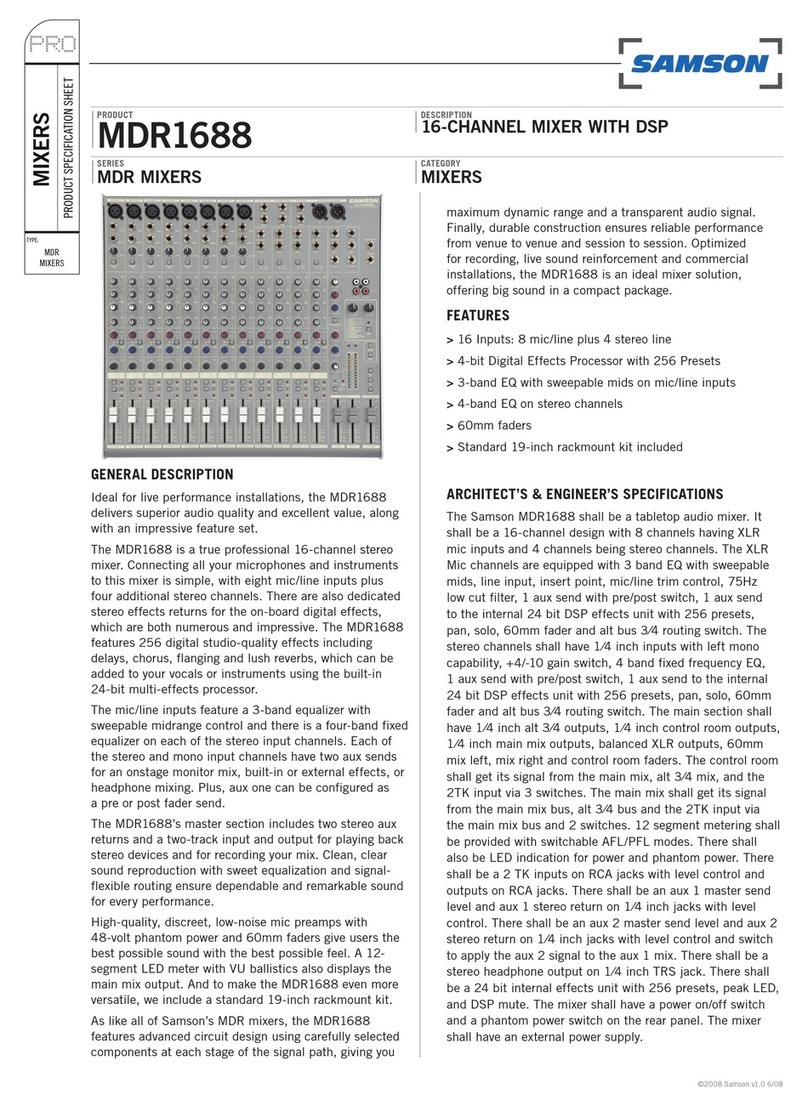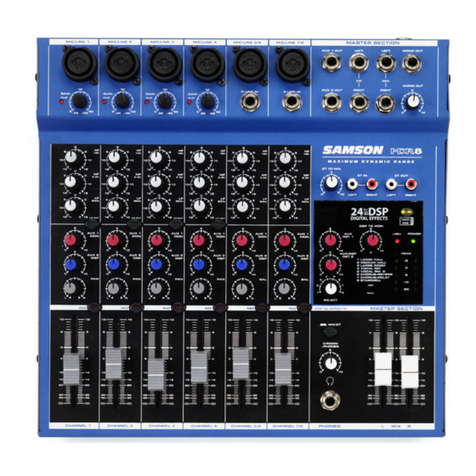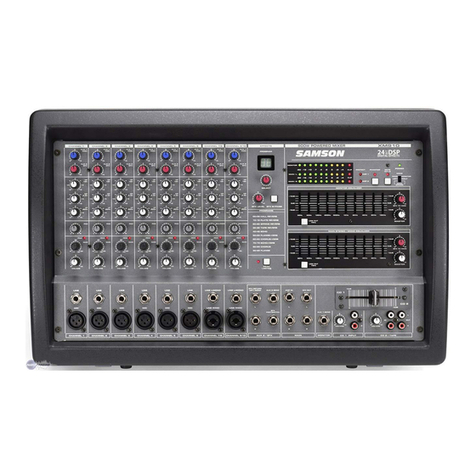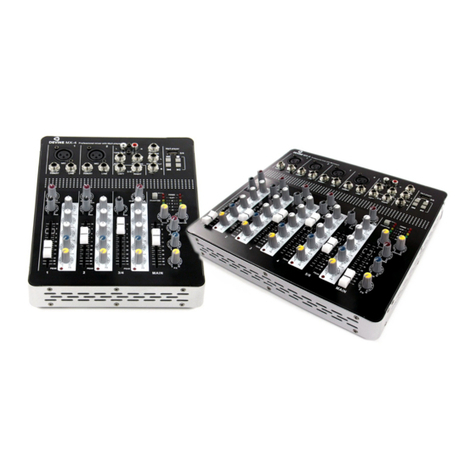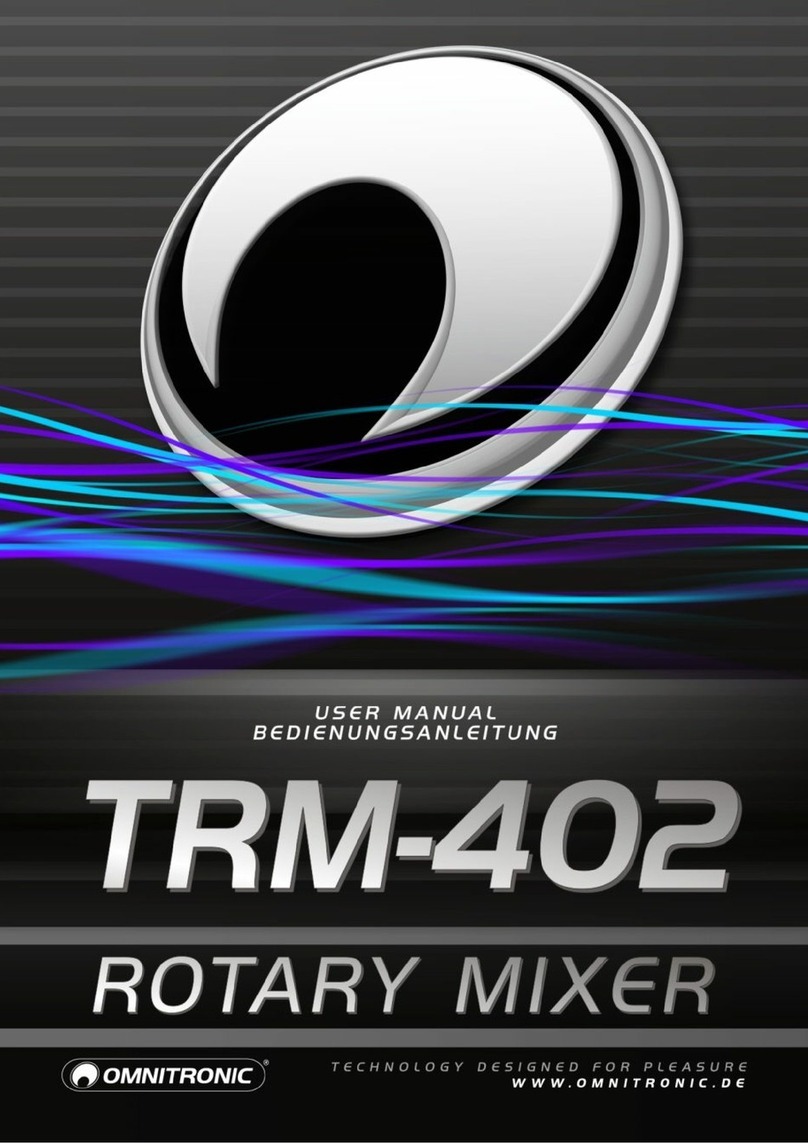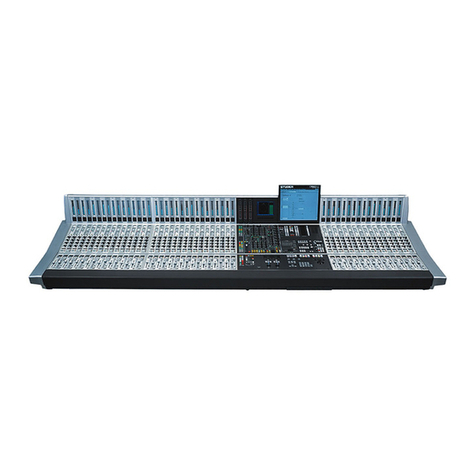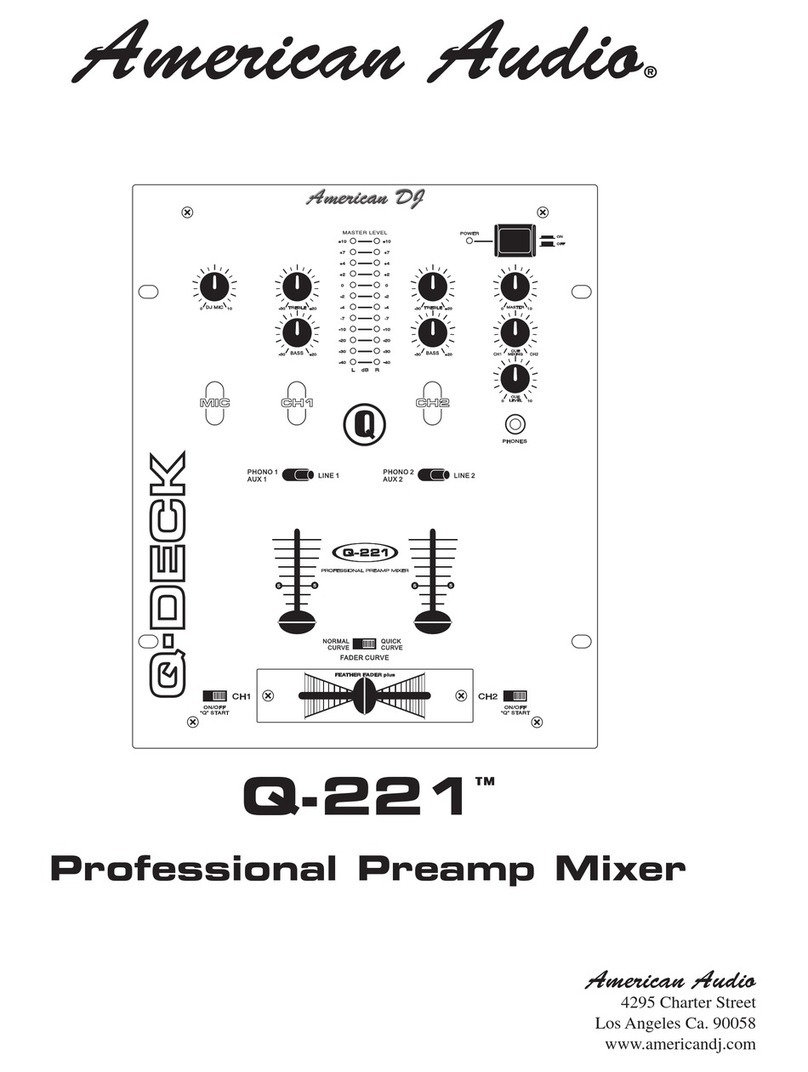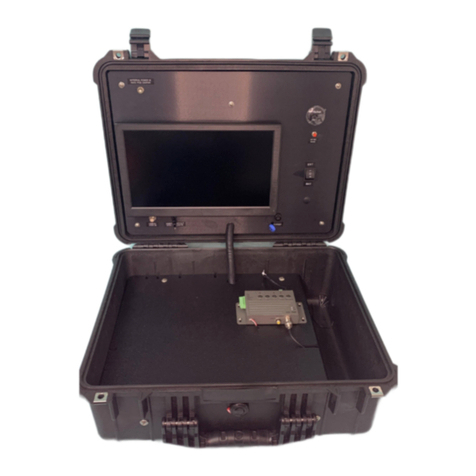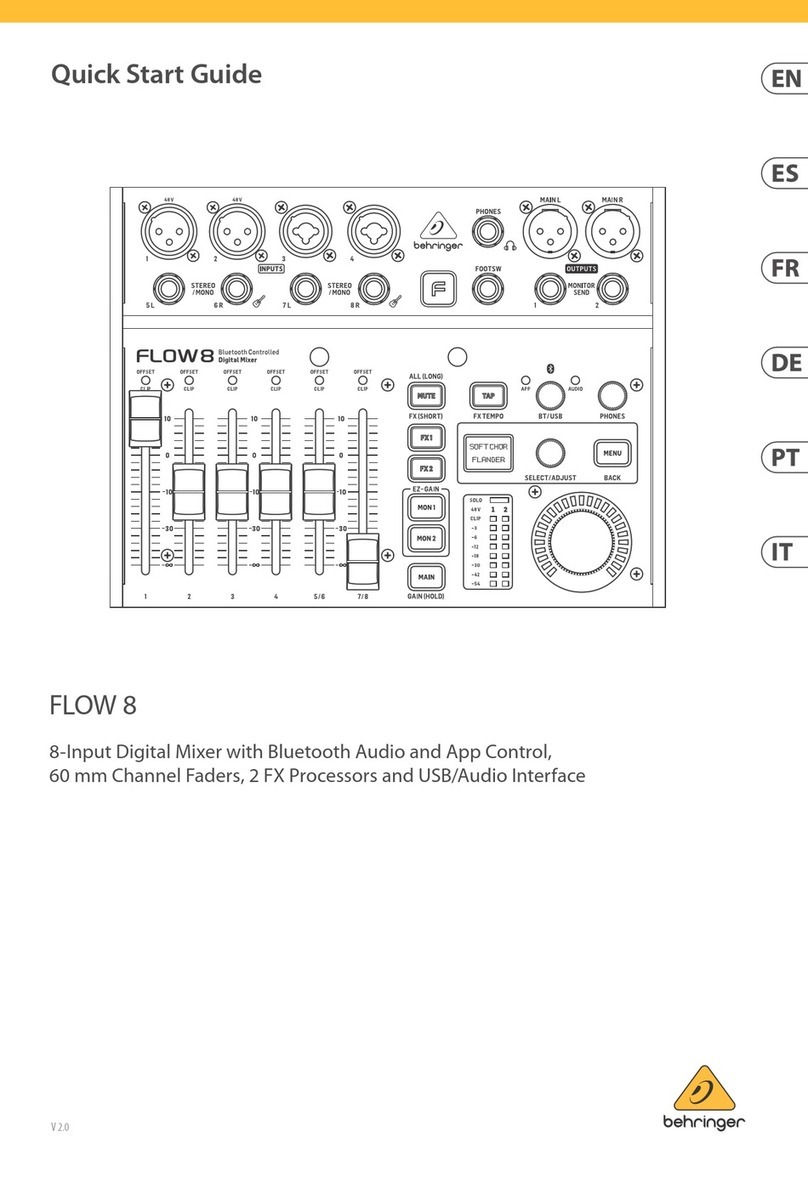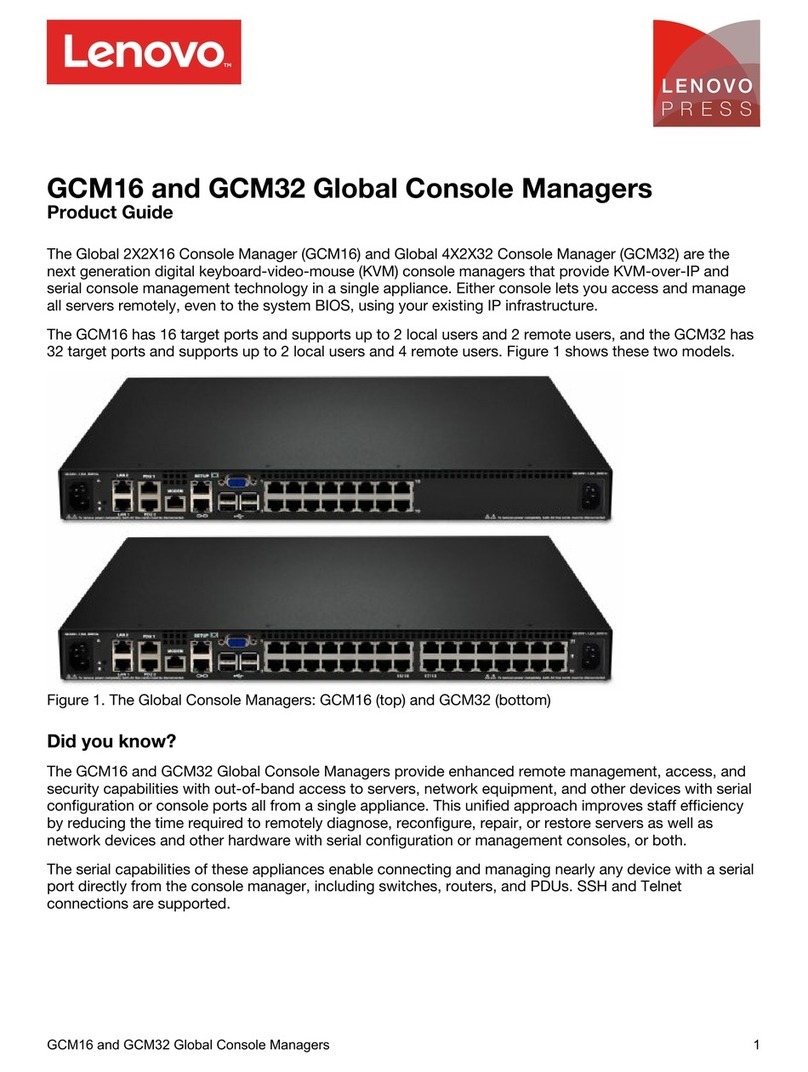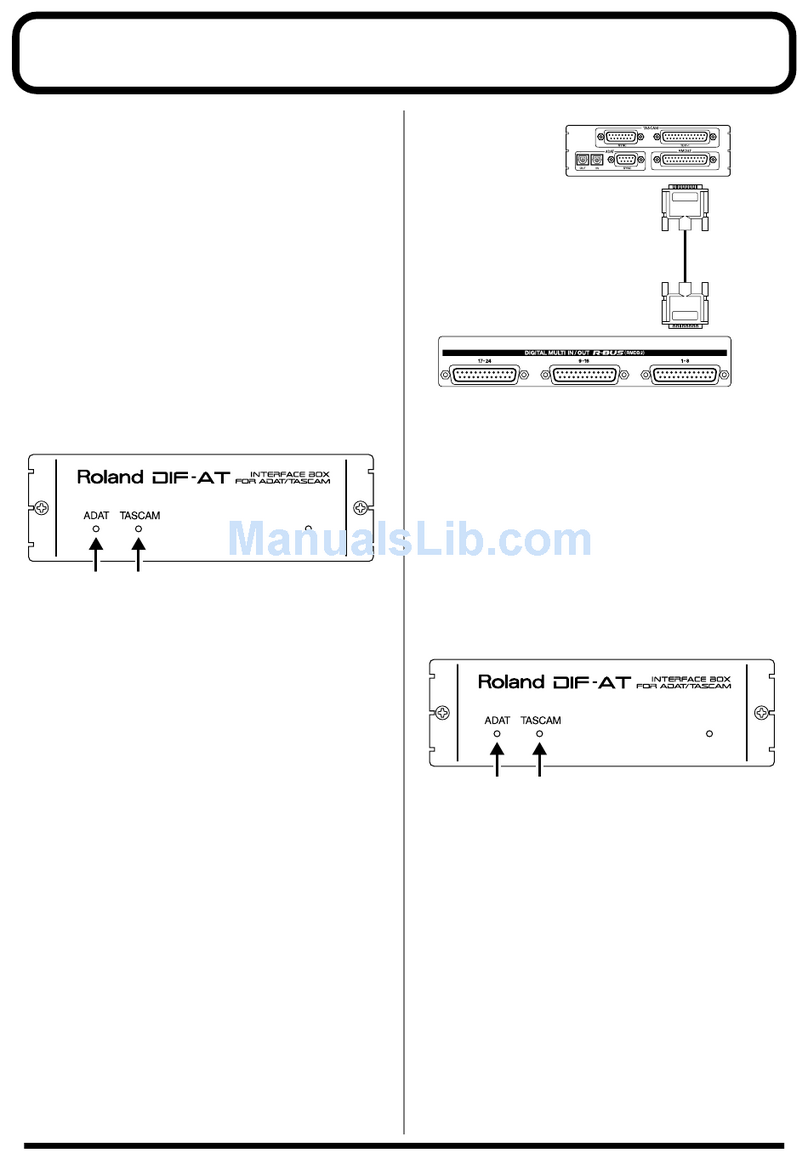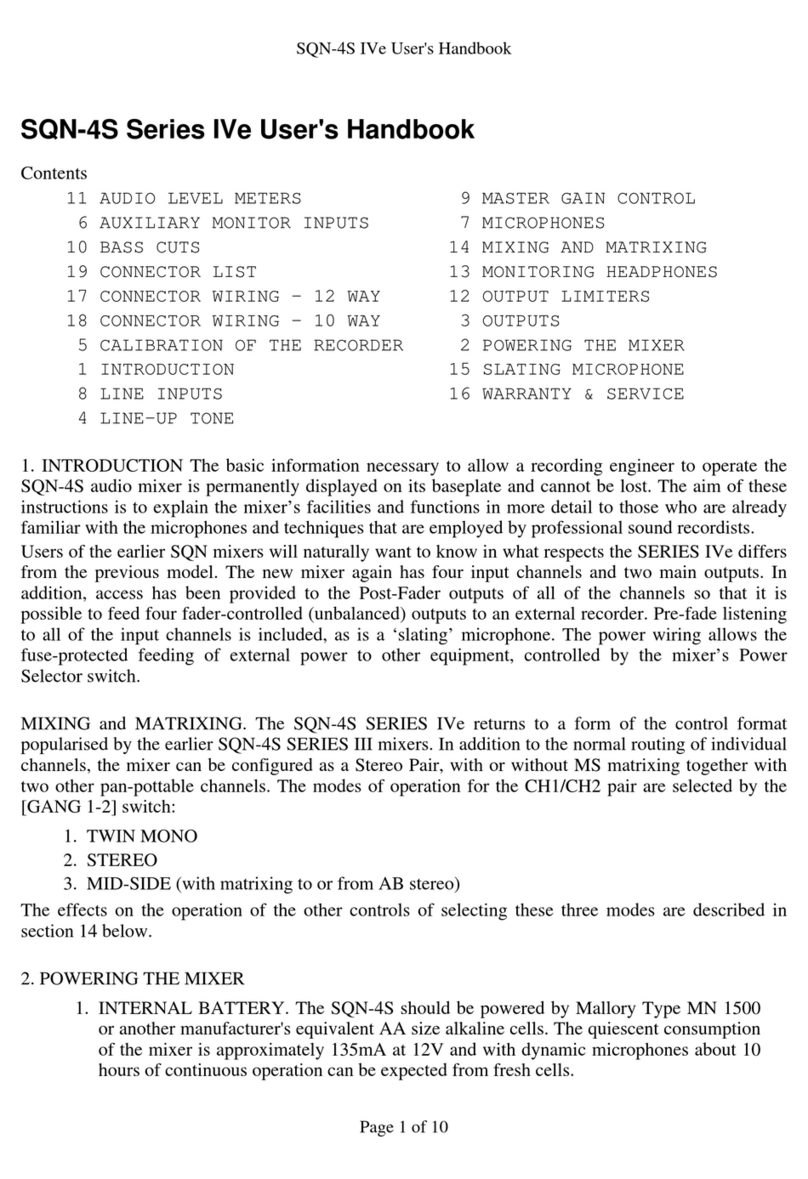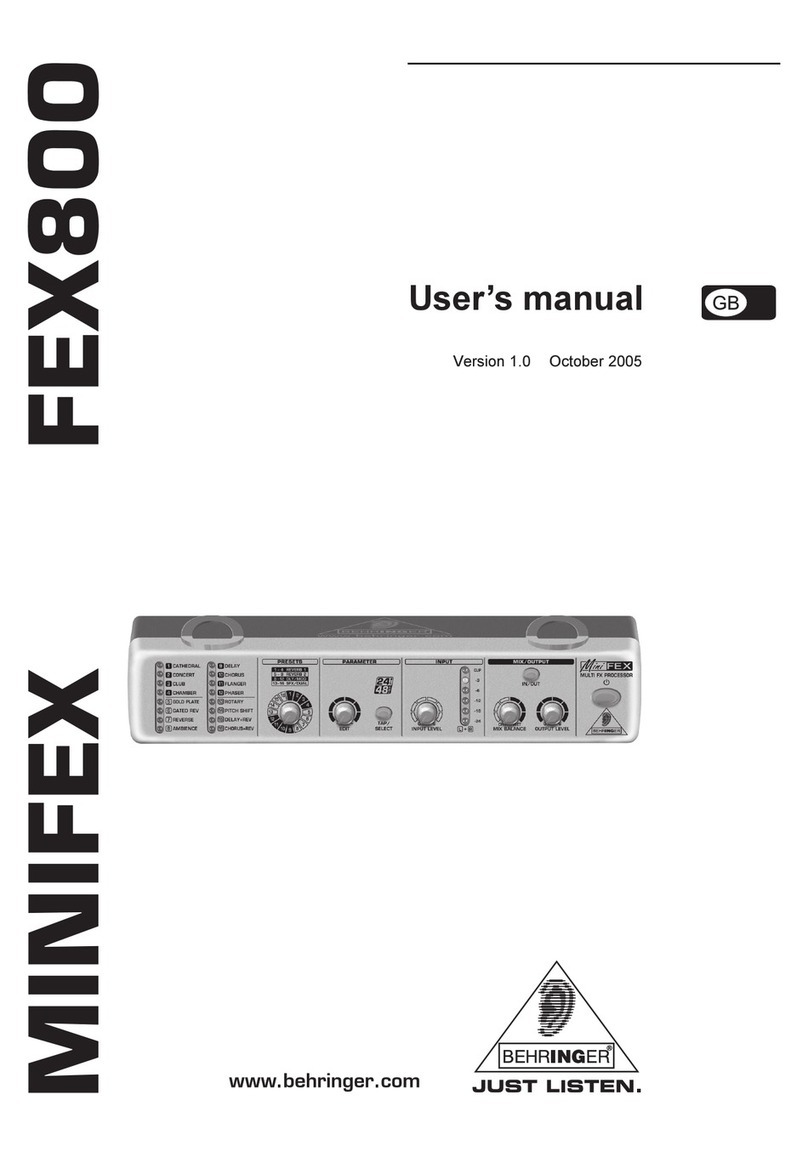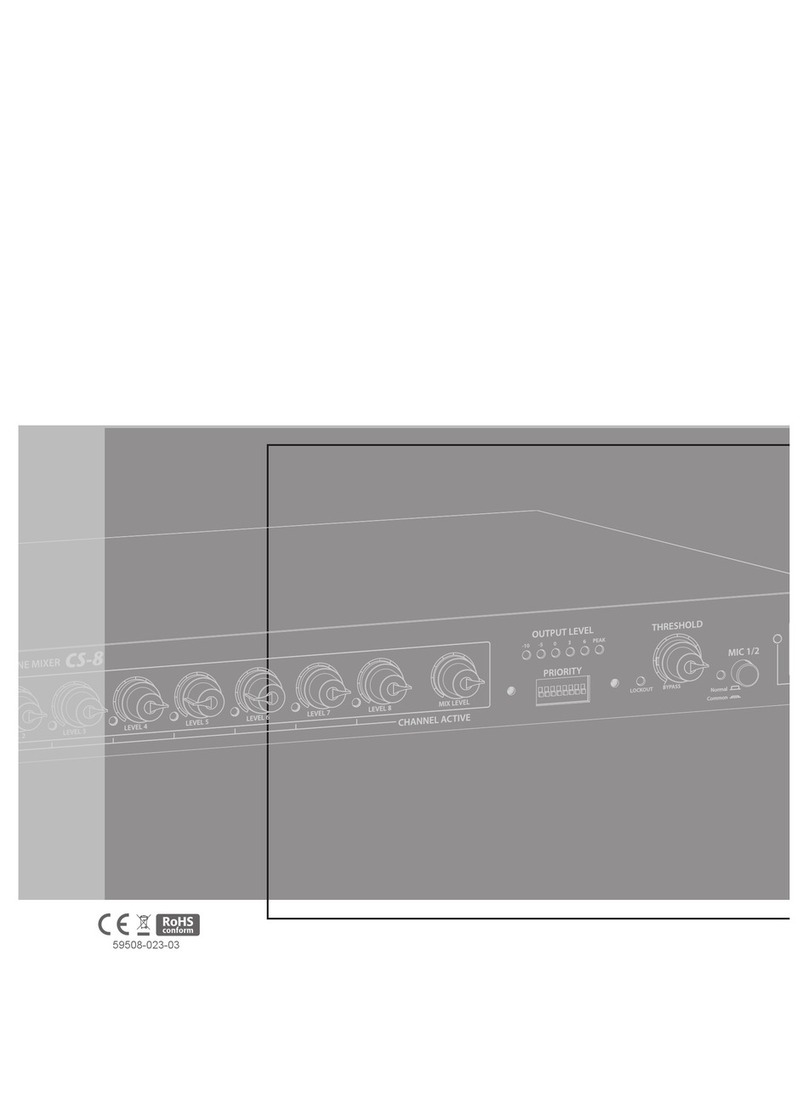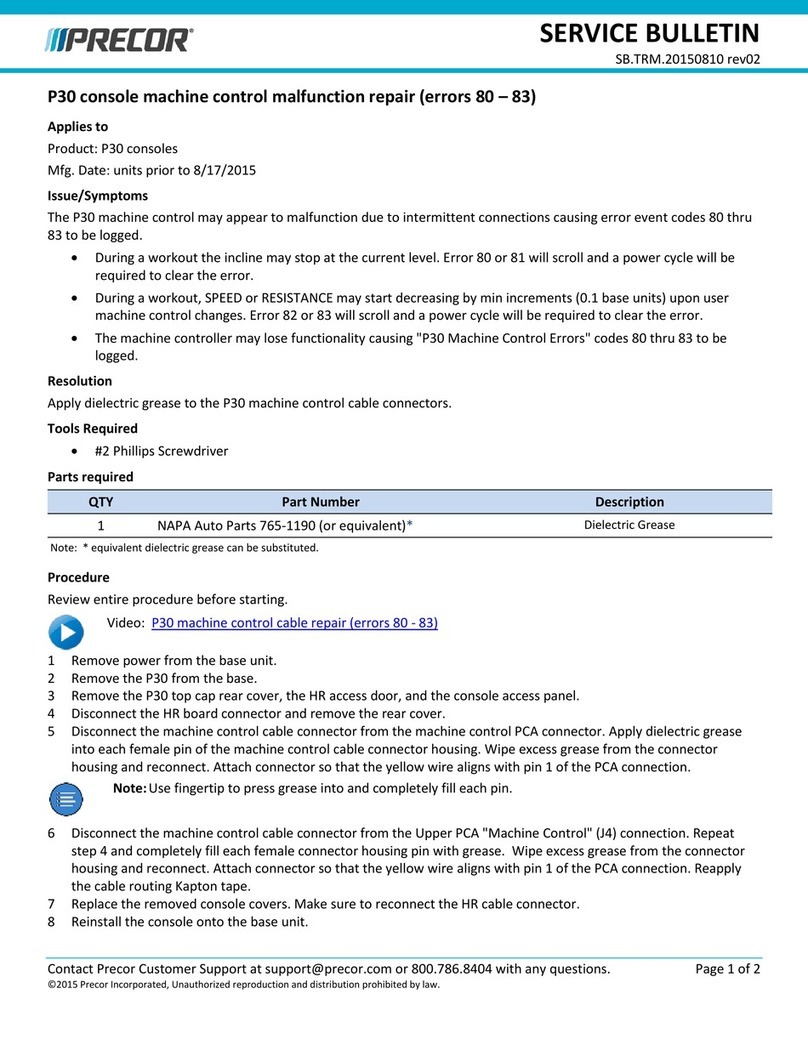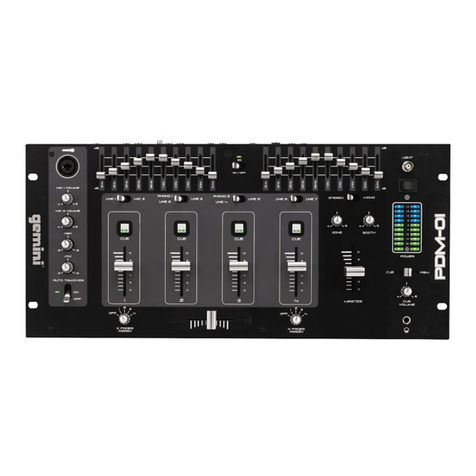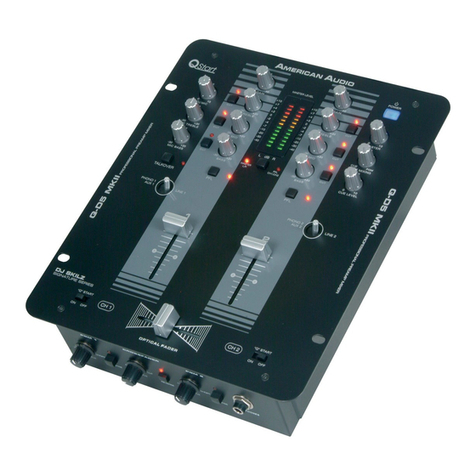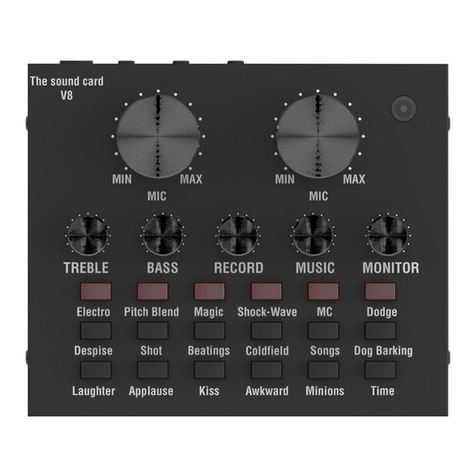Samson XM 410 User manual

Powered Mixers
SIX CHANNEL POWERED MIXER
WITH 24BIT DIGITAL EFFECTS

1
Congratulations on your purchase of the Samson XM410 powered mixer! The XM410 is a six channel, 400 Watt
powered mixer with a built-in, 24 BIT DSP (Digital Signal Processor) effects. The XM410 will give you clean,
clear sound reproduction thanks to the high quality, low noise microphone preamps, super clean mix bus,
on-board 7-band graphic equalizer and the high output/low distortion power amplifier. For studio quality
processing, you can add one of the 100 dazzling digital effects including Delays, Chorus and lush Reverbs to
your voice or instruments. The XM410’s ingenious Kickback enclosure allows you to tilt the unit back to see,
and operate, the controls with ease. The unit is easy to transport with its compact size and oversized, sure-grip
handle. The super-tough ABS construction ensures reliable, high quality sound from venue-to-venue and
performance-to-performance day in, and night out. Optimized for live sound reinforcement and commercial
installations, the XM410 is an ideal mixer and power amp solution offering big sound in a compact package.
In these pages, you’ll find a detailed description of the features of the XM410 powered mixer, as well a descrip-
tion of its front and rear panels, step-by-step instructions for its setup and use, and full specifications. You’ll
also find a warranty card enclosed—please don’t forget to fill it out and mail it in so that you can receive
online technical support and so we can send you updated information about these and other Samson prod-
ucts in the future. Also, be sure to check out our website (www.samsontech.com) for complete information
about our full product line.
With proper care and adequate air circulation, your unit will operate trouble free for many years. We recom-
mend you record your serial number in the space provided below for future reference.
Serial number: ___________________________
Date of purchase: _________________________
Should your unit ever require servicing, a Return Authorization number (RA) must be obtained before ship-
ping your unit to Samson. Without this number, the unit will not be accepted. Please call Samson at 1-800-
3SAMSON (1-800-372-6766) for a Return Authorization number prior to shipping your unit. Please retain the
original packing materials and if possible, return the unit in the original carton and packing materials. If you
purchased your Samson product outside the United States, please contact your local distributor for warranty
information and service.
Introduction

2
XM410 Features
The Samson XM410 Powered Mixer is a comprehensive, all-in-one mixer / power amplifier solution for live
sound applications. Here are some of its main features:
• Six channel powered mixer in ergonomically correct kickback enclosure allowing you to easily see and
operate the front panel functions.
• Six Mic / Line inputs with 1/4-inch phone and XLR connectors.
• 2 x 200 Watts, or 200 Watt Main / 200 Watt Monitor, or 400 Watts Bridged power operating modes.
• A built-in, 24-bit DSP (Digital Signal Processor) with 100 selectable presets including Reverb, Delay
and Chorus, offers dazzling studio quality effects.
• Dynamic or condenser microphones connect easily to the low noise mic pre-amps with available 48
Volt Phantom Power.
• The 3-Band EQ on each channel enables you to tailor the tonal response for each input.
* Two Auxiliary sends on each channel for building an independent mix to send to the DSP effects and
monitors.
• 7-band Graphic Equalizer for the Main mix, allowing the system to be set-up for maximum gain before
feedback.
• A convenient Tape / CD Input is provided so you connect a stereo device for accompaniment or back-
ground music.
• Brilliant sound quality from the advanced circuit design, utilizing low noise operational amplifiers.
• Durable ABS plastic enclosure is road tough insuring reliable performance from night to night and
venue to venue .
• Convenient oversize, sure grip handle make the unit easy to carry.
• Three-year extended warranty.

3
Controls and Functions
FRONT PANEL LAYOUT

4
Controls and Functions
INPUT CHANNEL SECTION
The following section details each part of the XM410’s INPUT CHANNELS includ-
ing the 3-BAND EQ, the MONITOR and EFX sends, LEVEL and PAD controls.
HIGH MID LOW - Channel Equalizer
The XM410 input channels feature a 3-band equalizer allowing you to adjust the
high, mid, and low frequencies independently on each channel. The channel’s
frequency response is flat when the knobs are in the "12:00" position. Rotating
the knob towards the right will boost the corresponding frequency band by
12dB/15dB, and rotating it towards the left will cut the frequency by 12dB/15dB.
The frequency centers, range of boost or cut, and equalizer type for each band
are as follows:
High: 12KHz +/- 15dB shelving type
Mid: 2.5KHz +/- 12dB peaking type
Low: 80Hz +/- 15dB shelving type
AUX 1/MON - Monitor Send
Each of the XM410’s channels include a MONITOR send which controls the
amount of that channel’s signal that is sent to the MONITOR bus. The Input
channel’s MONITOR sends are mixed together and are sent to the speakers con-
nected to the POWER AMP 1 A/B jacks if the POWER AMP select switch is set to
MAIN+MONITOR.
AUX 2 / EFX Effects Send
The XM410 provides high quality, 24 Bit digital effects, and the level of effects
can be set independently on each channel. The channel’s EFX (Effects) knob controls the amount of sig-
nal that is sent to the EFX bus. The signal of the EFX bus is routed to the DSP EFX section for on-board
signal processing. The EFX signal can also be sent to an external effect device connected to the EFX
OUT jacks located on the front panel.
NOTE: The channel’s EFX signal is sent to the EFX bus from a location in the signal path after the
VOLUME control (4). This is commonly referred as a POST FADER send. This means that the amount of
signal that is sent to the EFFECT bus will be affected not only by the setting of the EFX knob control,
but it will also be affected by the setting of the VOLUME control.
VOLUME - Level Control
The VOLUME control adjusts the output volume of each channel.
PAD - Pad Switch
The PAD switch attenuates the input signal by 20dB. When connecting a hot signal such as a line level
device to channels 1-6, or if the mic input is distorted, turn this switch on (the pressed-in position) and
readjust the VOLUME control.
1
2
3
4
5
FRONT PANEL CONTROLS

5
SELECT - Digital Effects Select Switch
The SELECT switch allows you to pick one of the 100 built-in digital effects.
Simply rotate the SELECT to choose the effect.
Effect PROGRAM List
This section identifies the ten banks of built-in DSP effects presets. The first
bank of 10 presets are designed for live performance, and the following
banks are set up in groups by the types of effects.
EFX LEVEL - Master Effect Send
The EFX LEVEL control is used to send the effect mix bus to an external effect
device connected to the AUX 2 SEND jack. The EFX LEVEL is also used to
control the overall level sent to the internal DSP.
EFX ON - switch
The EFX ON control is used to turn the internal Digital Effect on and off. The
effects are bypassed when the switch is in the out position and the display
shows two dashes
6
7
8
6
7
8
VOLUME - Tape In Level Control
This adjusts the amount of signal that is sent from the TAPE IN jacks to the
MAIN bus.
9
Controls and Functions
TAPE IN AND AUX IN SECTION
This allows you to adjust the level of the signal from an external device
such as an MP3 , cassette, or CD player or from an external effect device.
FRONT PANEL CONTROLS
24 BIT DIGITAL EFFECT SECTION
The XM410 features a built-in, 24 Bit Digital Effects processor with 100 high quality,
studio grade effects like Delay, Chorus and Reverb. The following section describes
the features of the powerful on-board digital effects section:

6
10
POWER AMP SECTION
The XM410’s power amplifier section can
be configured to operate several ways
depending on whether you need MAIN
plus MONITOR amplifiers to power your
speakers, or if you just need more power
for the MAIN speakers. The section below
describes the XM410 power amp modes.
Mode - Power amp Mode switch
The MODE switch is used to select one of
three different operating modes, MAIN-
MONITOR, MAIN-MAIN and MAIN-BRIDGE.
The following is a description of each of
the POWER operating modes:
CAUTION! Only change the power amp mode switch when the XM410’s power is SWITCHED OFF!
MAIN-MONITOR
With this setting, the MAIN and MONITOR sections can be used independently. The MAIN bus signal will
be sent from the POWER AMP 2 jack, and the MONITOR bus signal will be sent from the POWER AMP 1
jack.
MAIN-MAIN
With this setting, the two power amp channels can be used independently. The MAIN bus signal will be
output from the POWER AMP 1 jack (Rear Panel), and also, from the POWER AMP 2 jack (Rear Panel 1).
MAIN-BRIDGE
With this setting, the two power amp channels (A and B) will be connected in bridge mode. Only the
MAIN bus signal will be output from the BRIDGE jack.
FRONT PANEL CONTROLS
Controls and Functions

7
MAIN SECTION
The XM410 has two internal power amplifiers
and depending on the power amp MODE selec-
tion switch, the amplifiers are sent the MAIN
or MONITOR bus signal. The following section
describes the MAIN bus operation, which allows
you to adjust the over-all tone and volume, and
specify the mix level of the built-in effects:
Graphic Equalizer
The XM410’s 7-band Graphic Equalizer allows
you to contour the frequency response of the
MAIN mix bus signal, providing a maximum
of 12dB of cut/boost for each frequency band.
This is an especially useful tool for cutting fre-
quencies that cause annoying feedback. The
frequency response is flat when the sliders are
in the center position. Moving a slider in the
positive direction will boost that frequency
by as much as 12dB, and moving the slider in the negative direction will cut that frequency by up
to 12dB. Once you set a response curve using the Graphic Equalizer, the EQ curve is applied to both
the MAIN bus signal that is output to the speakers, and the line level signal which is output from the
MAIN OUT jack.
EFX RETURN - Effects Return Control
The EFX RETURN control is used to adjust the level of the effect sound being sent back from the built-
in digital effect to the MAIN mix bus. This allows you to hear the DSP effects in your MAIN speakers.
MASTER - Volume Control
The MASTER level control is the over-all volume control for the MAIN bus. The MAIN level affects
both the MAIN bus signal which is output to the speakers and the line level signal which is output
from the MAIN OUT jack.
MAIN Output Level Meter
The OUTPUT LEVEL METER allows you to monitor the level of the signal which is being sent to the
MAIN OUT jack (input/output panel 8).
NOTE: To avoid distortion, adjust the MASTER LEVEL control so that the 0 indicator LED lights occa-
sionally.
14
Controls and Functions
FRONT PANEL CONTROLS
11
12
13

8
EFX RETURN - Effects Return Control
The EFX RETURN control is used to adjust
the level of the effect sound being sent
back from the built-in digital effect to the
MONITOR bus. This allows you to hear the
DSP effects in your monitor speakers.
MASTER - Volume Control
The MASTER level control is the overall
control for the MONITOR bus. The MONITOR
level affects both the MONITOR bus signal
which is sent to the monitor speakers and
the line level signal which is sent from the
MONITOR OUT jack.
MONITOR Level Meter
The OUTPUT LEVEL METER allows you to monitor the level of the signal which is being sent to the
MONITOR OUT jack and MONITOR POWER AMPLIFIER.
NOTE: To avoid distortion, adjust the VOLUME level control so that the 0 indicator LED lights occa-
sionally.
MONITOR SECTION
The XM410 has two internal power amplifiers and depending on the MODE selection switch, the
amplifiers received their input signals from
the MAIN or MONITOR bus. The following
section describes the MONITOR bus opera-
tion, which allows you to adjust the overall
tone and volume, and specify the mix level
of the built-in effects:
15
16
Controls and Functions
FRONT PANEL CONTROLS
17

9
XM410 Input and Output Connections
CHANNEL 1–6 MIC and LINE INPUTS
The XM410’s six input channels each have a LINE level, Hi-Z (High Impedance) input and a MIC level, Low-Z
(Low impedance) input. By using the PAD switches, you can connect a variety of signal sources from micro-
phones to line level devices such as synthesizers, drum machines and direct boxes. Both LINE and MIC inputs
are balanced, with MIC inputs compatible with microphones of output impedance 50-600 Ohms and LINE
inputs compatible with line level devices of 600 Ohms.
NOTE: It is not possible to simultaneously use both the LINE and MIC inputs on the same channel. For each
channel, use only one of the inputs as appropriate for the input source.
1
1
3
3
4
4
5
5
6
6
2
7
89
2
LINE - Line Level Input
Use these inputs to connect high impedance microphones, synthesizers and drum machines. The LINE
inputs have a nominal operating level of -40dBV through - 10dBV.
TRS phone jacks Connector pin-out - Sleeve: Ground, Tip: Hot (+), Ring: Cold (-)
MIC - Microphone Input
Use these inputs to connect Low Impedance microphones and low level signals from direct boxes. The
MIC inputs have a nominal operating level of –50dBV through -20dBV. The MIC inputs also feature +48V
phantom power, allowing you to use condenser microphones. The Phantom Power is switched on/off
simultaneously for channels 1 through 6.
XLR Connector pin-out - Pin 1: Ground, Pin 2: Hot (+), Pin 3: Cold (-)
AUX 2 SEND - Effects Output
The AUX 2 SEND output is used to interface an external signal processor like a delay or reverb. The sig-
nal present at the AUX 2 SEND output is sent from the EFFECTS bus, which is fed from the EFX send on
the input channels and the EFFECTS LEVEL send in the Master section.
EFX FOOTSWITCH - Footswitch Jack
With a foot switch connected to this jack, you can turn on and off the on-board digital effects by simply pressing
the switch with your foot.
AUX IN - Auxiliary Input
Used to connect monaural output devices such as external effects processors.
TAPE IN - Tape Input
Used to connect a stereo output device such as cassette recorder or CD player.
EXTERNAL INPUT JACKS (AUX IN/TAPE IN)
These are input jacks that allow the signal from an external device to be added to the MAIN output.

10
REC OUT - Record Output
The signal present at this connector is the MAIN bus signal before it has passed through the MASTER level
control and graphic equalizer. The nominal output level is -10dBV and the impedance is 100 Ohms.
MAIN OUT - PRE OUT MIX OUTPUT
The signal present at this connector is the MAIN bus signal, which has passed through the MAIN/ MASTER
level control and the graphic equalizer. The nominal output level is +4dBu and the impedance is 100 Ohms.
MONITOR OUT - AUX 1 SEND
The MONITOR bus signal is present at this connector. The signal is passed through the MONITOR /MASTER
level control and graphic equalizer before it reaches the MONITOR OUT connector. The nominal output level
is +4dBu and the impedance is 100 Ohms.
XM410 Input and Output Connections
7
8
REAR PANEL
The XM410 contains two mono power amplifiers and depending on the operating mode, the two amplifiers
can be used independently (maximum output 200W + 200W) or in BRIDGE mode (maximum output 400W).
NOTE: Use the front panel MODE switch to select which signal is sent to the speaker output jacks, and to activate
BRIDGE mode.
If the two power amplifiers are used for MAINS operation, two 8 ohm speakers can be "daisy-chained" together and
connected to the AMP 1 jack, and two more 8 ohm speakers can be "daisy-chained" together and connected to the
AMP 2 jack, for a total of four speakers. See the diagram on page 11.
The total impedance load for each amplifier must not exceed 4 Ohms, therefore in the example above, two speak-
ers with an impedance of 8 ohms each are connected to each amp’s output jacks.
If you wish to use two amplifiers independently, let’s say for Main and Monitor operation, use a 4 through 8 Ohm
speaker. Again, the total impedance load for each amplifier must not exceed 4 Ohm. Therefore two speakers with
an impedance of 8 ohms can be "daisy-chained" together and then connected to each amp’s output jacks.
If the two amplifiers are used in a BRIDGE mode, only one speaker can be connected to the BRIDGE jack. The total
impedance load while operating in Bridge mode must not be less than 8 Ohms.
If you are connecting a speaker to the BRIDGE jack, use an 8 through 16 Ohm speaker.
CAUTION: When using a bridge connection, do not connect anything to the AMP 1 and AMP 2 jacks. Likewise,
when using the POWER AMP 1 and POWER AMP 2 jacks, do not connect anything to the BRIDGE jack.
9
EXTERNAL OUTPUT JACKS
The XM410 features several output connectors allowing you to interface a variety of external devices. A stereo
recording device such as a cassette recorder can be connected to the REC OUT jacks, and additional power
amplifiers can be connected to the MONITOR and MAIN output jacks.

11
SPEAKER CONNECTION
The XM410’s power amplifier section can be configured to operate several ways depending on the setting of
the power amp MODE switch located on the front panel. This allows you to choose whether you need MAIN
plus MONITOR amplifiers to power your speakers, or if you just need more power for the MAIN speakers. For
more information on the power amp MODE switch, see the section POWER AMP SECTION on page 6 of this
manual.
There are three ways in which speakers can be connected to the XM410: A single speaker can be connected to
the output jack of AMP 1 and AMP 2, two speakers can be connected in parallel to output jacks of AMP1 and
AMP 2, or a single speaker can be connected to the BRIDGE jack (bridge connection). For each of these, the
required speaker impedance will differ.
Refer to the following diagram, and make sure that the speaker impedance is not less than the specified value.
Additional, or alternative amplifiers can be connected to the MAIN OUT and MONITOR OUT jacks on the front
panel.
XM410 Input and Output Connections
When connecting one
speaker to POWER AMP
1 and one speaker to
POWER AMP 2, use speak-
ers with a 4 – 8 ohm
impedance rating.
When connecting two
speakers to POWER AMP
1 and two speakers to
POWER AMP 2, use speak-
ers with a 8 – 16 ohm
impedance rating.
When the POWER AMPS
are in BRIDGE use a
speaker with a 8 – 16 ohm
impedance rating.
In this example, each pair of speakers is wired in
Parallel or "daisy-chained" together using the speaker's
Extension Output, so the total impedance when two 8
Ohm speakers are connected is 4 Ohms.

12
Operating the XM410
BASIC OPERATION
The following section explains the basic operation of the XM410.
CONNECTING MICROPHONES AND INSTRUMENTS
1. Before connecting mics or instruments,
make sure that the power of all your
systems components, including the
XM410, is turned off. Also, make sure
that the level controls of each channel
of the XM410 and the VOLUME control
of the MAIN section are turned all the
way down.
2. Connect the cables to your micro-
phones and instruments, and insert the
other end of the cable firmly into the
appropriate input on the XM410.
NOTE: When connecting a line level
device to channels 1 through 6, it’s a
good idea to start with the pad switch on.
(Note: You cannot use a channel’s MIC and
LINE jacks at the same time.)
3. Switch on the power of any peripheral
devices, and then power up the XM410.
NOTE: Since the XM410 contains two
power amplifiers, it is important to remember the Golden Rule of audio … " LAST ON, FIRST OFF". Translated,
this means that when turning on your system, you should always turn your power amplifiers on LAST, and
when turning your system off, turn your power amps off FIRST. This helps avoid any loud pops caused by
rush current at power up or power down, which can sometimes damage loudspeakers .
4. Set the MASTER control of the MAIN section to the "5" position.
5. While speaking into the mic (or playing the instrument), adjust the channel VOLUME control so that the "0"
LED of the MAIN section peak level meter lights occasionally.
6. If you wish to adjust the tone of each channel, adjust the equalizer controls as desired. You may have to
re-adjust the channel volume.
7. Use the MAIN section graphic equalizer and MASTER control to adjust the overall volume and tone.

13
Operating the XM410
USING THE DIGITAL EFFECTS
The XM410 features a built-in, high quality, 24 BIT Digital Signal Processor offering studio grade effects. The DSP
features clean Delay, lush Reverbs and multi-effects like Chorus + Delay or Chorus + Reverb. You can add a broad
range of studio quality effects by simply dialing through the 100 presets. The following details the operation of the
internal DSP effects:
1. Connect a mic or instrument to the desired channel, and adjust the volume and equalizer to your liking.
2. Press in the EFX ON switch. Now select the desired preset using the EFFECTS
SELECT switch. Set the DSP SELECT switch to one of the following 100 effects:
0 - 9 Performance
10 - 19 Hall Reverb
20 - 29 Plate Reverb
30 - 39 Spring Reverb
40 - 49 Echo
50 - 59 Flange + Verb
60 - 69 Chorus + Verb
70 - 79 Echo + Verb
80 - 89 Chorus
90 - 99 Flange
4. Once you have selected the desired effect preset, raise the EFX control on the chan-
nels you wish to apply the digital effect to.
5. Now use the EFX RTN knob in the MAIN/MONITOR section to adjust the EFFECTS Return level. The EFX control
is the overall level control for the DSP effects processor. If you are not using the XM410 in MAIN/ MONITOR or
BRIDGE mode, be sure to raise the EFX RTN control up on both the MAIN and MAIN/ MONITOR sections so the
level of effect is the same in both speakers.
NOTE: If the effect sound is distorted even though the EFX RTN is turned all the way down, lower the EFX controls
of each channel.
SENDING AN INDEPENDENT MIX TO THE MONITOR
SPEAKERS
The XM410 allows you to operate the power amplifiers in
a MAIN/ MONITOR mode. This lets you use one amplifier
for speakers facing the audience, and the other amplifier
for the monitor speaker facing the musicians.
1. Set the channel MONITOR section and VOLUME control
to the "0" position.
2 Use the MASTER controls of the MAIN/MONITOR sections to
adjust the overall volume and tone.
NOTE: The MONITOR controls are not affected by
the level settings of each channel. This allows you to create a mix for the monitors that is independent of
the MAIN mix.
3. Raise the MONITOR controls for the channels that you wish to hear from the monitor speakers.

14
Operating the XM410
USING AN EXTERNAL EFFECT
If you prefer to use an external device for effects process-
ing, you can easily connect the unit using the XM410
EFX bus. Follow the simple steps below to interface your
processor:
1. Set the MONITOR section VOLUME control to the "0"
position.
2. Raise the EFFECT controls for the channels to which
you want the external effect to be applied.
3. Now adjust the EFX LEVEL to about half way.
4. Set the input level of the external effect so that the
sound is not distorted and so that the effect’s input
meter does not indicate a clipped signal.
5. Use the AUX IN control to adjust the level of the effects
processed by the external effects device.
PLAYING BACK A CD
The XM410 has a dedicated input for playing back a CD,
Tape or Mini Disk. Below is a description of how you
can play back a CD, Tape or MD using the XM410’s TAPE
INPUT.
1. Turn the TAPE IN level control and the VOLUME level
control all the way down.
2. Follow the "LAST ON, FIRST OFF" rule and turn on your
peripheral devices and then the power on the XM410.
3. Adjust the VOLUME control of the MAIN section to the
"5" position.
4. Start playback on the CD, Tape or MD player, and use
the TAPE IN control to adjust the level so that the zero
LED of the MAIN section peak level meter lights occa-
sionally. Adjust the master volume control to raise the
level if necessary.
RECORDING FROM THE XM410
You can record the audio from the XM410’s mixer section
including the MIC, LINE, TAPE IN and AUX inputs to a cas-
sette deck, MD, DAT or any other type of recorder using the RECORD outputs. Simply connect the XM410’s
REC OUT to the input jacks of the recorder as shown in the diagram above.

15
XM410 System Set-Ups
3)'.!,&,/7
3)'.!,&,/7
3)'.!,&,/7
3)'.!,&,/7
3
!
-
3
/
.
2
3
!
-
3
/
.
2
3)'.!,&,/7
3)'.!,&,/7
SAMSON TECHNOLOGIES CORP.,HICKSVILLE, NEW YORK
TO PREVENT SHOCKDO
NOT OPEN.NO USER
SERVICABLE PARTS
INSIDE. REFER SERVICING
TO QUALIFIEDSERVICE
PERSONNEL. TO PREVENT
FIRE OR SHOCK HAZARD
DO NOT EXPOSE TO RAIN
ORMOISTURE.
CAUTION
HEATSINKMAYBE
HOT!DO NOT BLOCK
AIRFLOWOR OVER-
HEATINGMAYOCCUR
RISKOF ELECTRIC SHOCK
DONOT OPEN
SERIAL
NUMBER
FUSE
FUSERATING
12A/250V(115V)
6A/250V(230V)
CAUTION
!
~ACINPUT
115V/230W,50/60HZ
510W(115V)900W (230V)
USECLASS 2 WIRING MAXIMUM LOAD IMPEDANCE 47
RIGHT LEFT
+RIGHT LEFT+
GROUND
OUTPUT250W/47
SERVO 550 STUDIO AMPLIFIER
RIGHT
LEFT
BRIDGED
MONO STEREO
INPUTS
(BALANCED
10K7/0dBm0)
TIPRING SLEEVE
TIP +
RING -
SLEEVEGND
This system shows the
XM410 power amp
operating in MAIN/MAIN
mode,with one speaker
connected to POWER
AMP 1 and one speaker
connected to POWER
AMP 2. The MONITOR
OUT is connected to an
external power amp,
which is driving 2 moni-
tor speakers. For inputs,
two microphones are
connected to channel
1 and 2’s low-imped-
ance inputs, and the
output of the Bass Direct
Box is also connected
to the Low-Impedance
input on channel 4. The
Keyboards, as well as
the Lead and Rhythm
Guitar signal processors’
outputs,are connected to
the XM410’s line inputs.
XM410’s MONITOR OUT
connected to an external
monitor amp.

16
16
XM410 System Set-Ups
This system shows the
XM410 power amp oper-
ating in MAIN/MONITOR
mode,with two speakers
connected to POWER
AMP 2 and two moni-
tor speakers speaker
connected to POWER
AMP 1. For inputs,two
microphones are con-
nected to channel 1
and 2’s low-impedance
inputs,and the output
of the Bass Direct Box
is also connected to
the Low-Impedance
input on channel 4. The
Keyboards, as well as
the Lead and Rhythm
Guitar signal processors’
outputs,are connected to
the XM410’s line inputs.

Specifications
82
Specifications
Rated Output power 200W/4Ω per amplifier
Frequency response 20Hz~20KHz+/-0.5dB@1W Output into 8Ω (AMP OUT)
20 Hz~20KHz+/-0.4@+4dB Output into 10kΩ (MAIN OUT,
MONITOR OUT, AUX 2 SEND)
Total Harmonic Distortion Less than 0.06%@20Hz~20KHz, 75W output into4Ω (AMP OUT)
Less than 0.1%@20 Hz~20KHz+14dB output into 10KΩ
(MAIN OUT, MON OUT, AUX 2 SEND) + 4dB
HUM & Noise -121dB equivalent input noise
(Average, RS+150Ω) -100dB residual output noise (MAIN OUT, MONITOR OUT, AUX 2
OUT)
(with 22Hz~22KHz BPF) -79dB (MAIN OUT, MONITOR OUT) Master level control at maxi-
mum all channel level control at minimum.
-79dB (AUX 2) Master level control at maximum all channel level
controls at minimum
Maximum Voltage Gain 67dB CH IN (MIC) to AMP OUT
48dB CH IN (MIC) to MAIN OUT, MONITOR OUT
54dB CH IN (MIC) to AUX 2 OUT
30dB CH IN (MIC) to REC OUT
32dB CH IN (LINE) to MAIN OUT, MONITOR OUT
26dB AUX IN to MAIN OUT
24dB TAPE IN to MAIN OUT
Crosstalk 1KHz 70dB adjacent input, 70dB input to output
Input Channel Equalization HIGH 12KHz shelving (+/- 15dB Maximum)
MID 2.5KHz peaking (+/- 12dB Maximum)
LOW 80Hz shelving (+/- 15dB Maximum)
Meters 7 POINT LED METERS (-20, -10, -7, -4, 0, +3, +6dB)
Graphic Equalizer 7 bands (63, 160, 400, 1K, 2.5K, 6.4K, 16KHz)
Internal DSP Effects 24 BIT - 10 Presets each: 1 - Performance; 2 - Hall Reverb, 3 - Plate
Reverb; 4 - Spring Reverb; 5 - Echo; 6 - Flange + Verb; 7 -
Chorus + Verb; 8 - Echo + Verb; 9- Chorus; 10- Flange
Phantom Power +48V
CLIP Indicators Turn on: THD> 0.1%
Foot Switch DIGITAL EFFECT MUTE: ON/OFF
GENERAL
Power Requirement 110V-240V, 50/60Hz
Power Consumption 100 W 1/8 power, 800W full
Weight 40 lbs./18.2Kg
Dimensions 21” (W) x 14” (H) x 13-3/4” (D)
534mm(W) x 356mm(H) x 350mm(D)
Specifications subject to change without notice

87
Block Diagram/Synoptique/Blockdiagramm/Diagrama de bloques /Diagramma a Blocchi
Other manuals for XM 410
2
Table of contents
Other Samson Music Mixer manuals
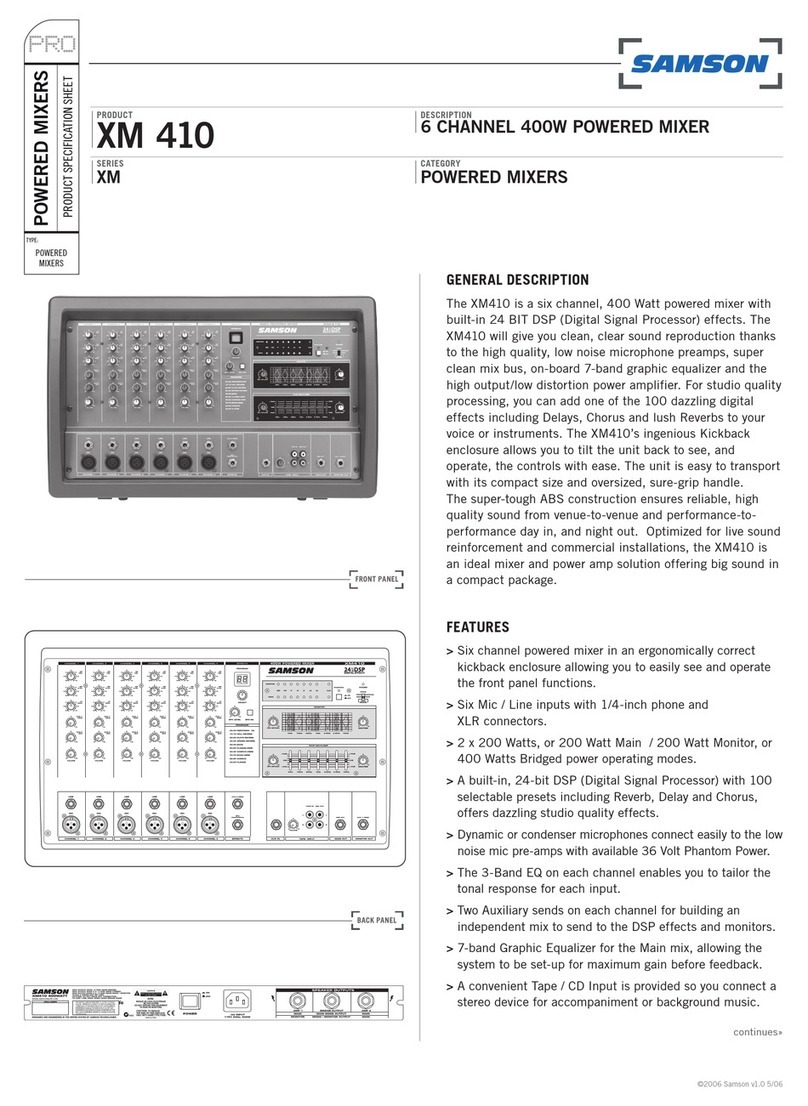
Samson
Samson XM 410 User manual
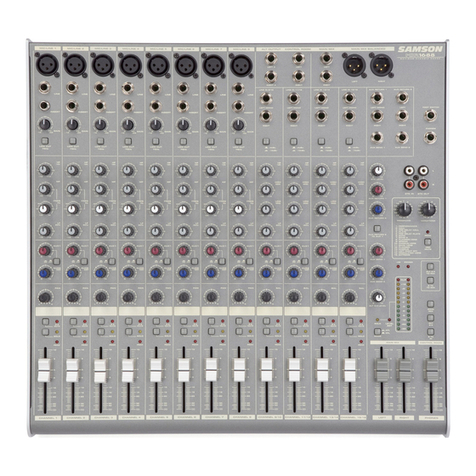
Samson
Samson MDR1248 User manual
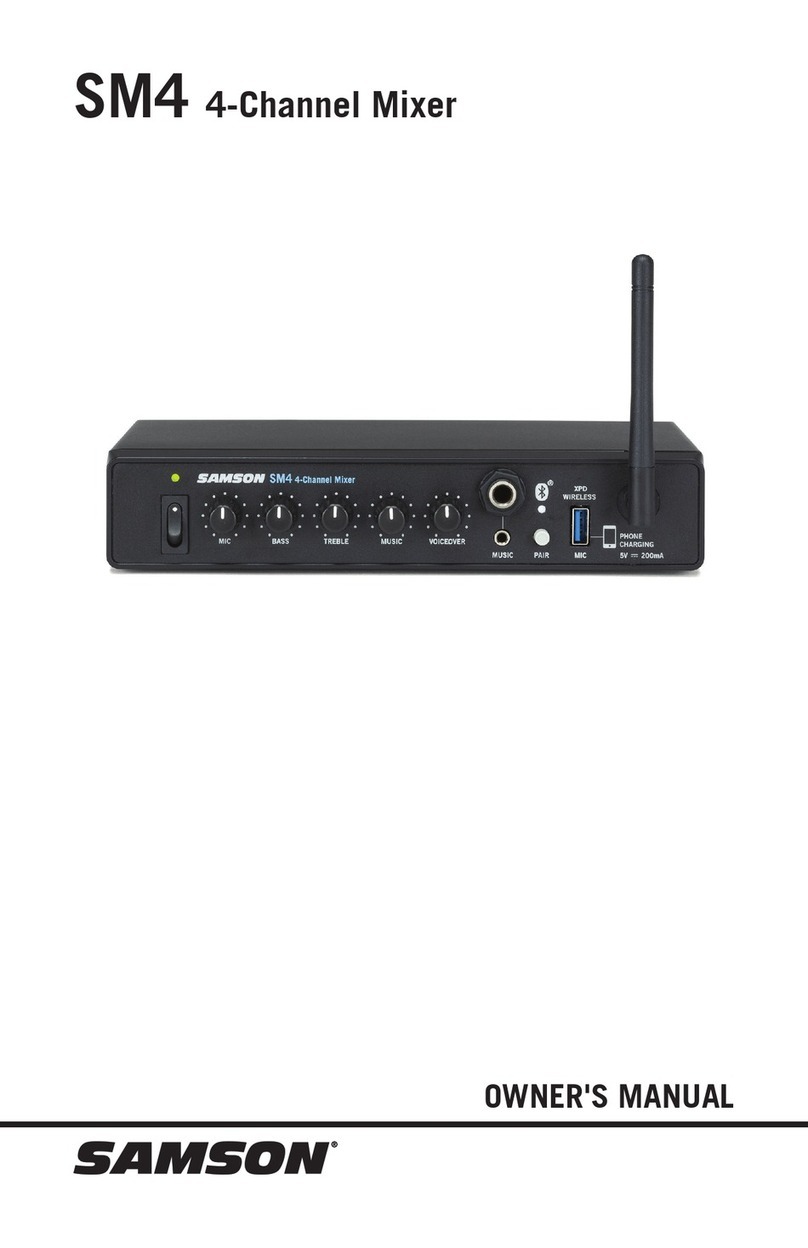
Samson
Samson SM4 User manual
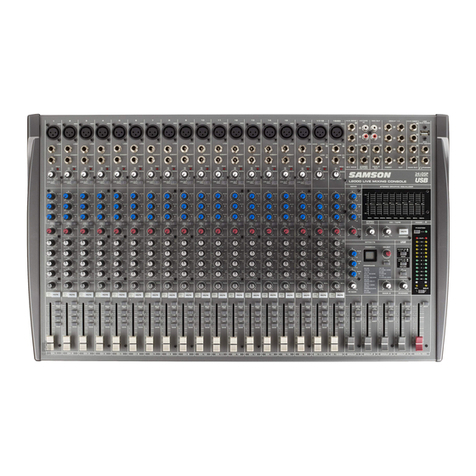
Samson
Samson LI200 User manual
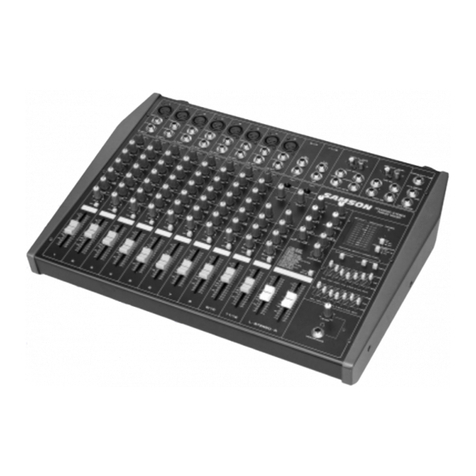
Samson
Samson TM 500 User manual
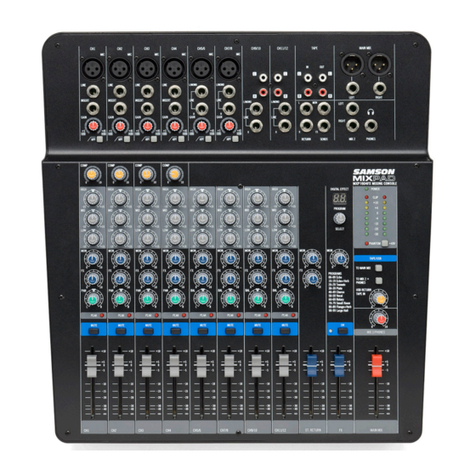
Samson
Samson MIXPAD MXP144 User manual
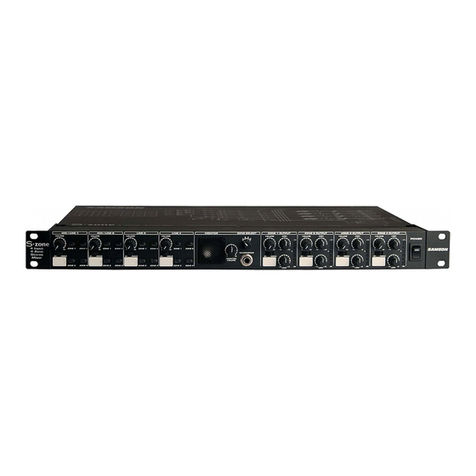
Samson
Samson S-zone User manual
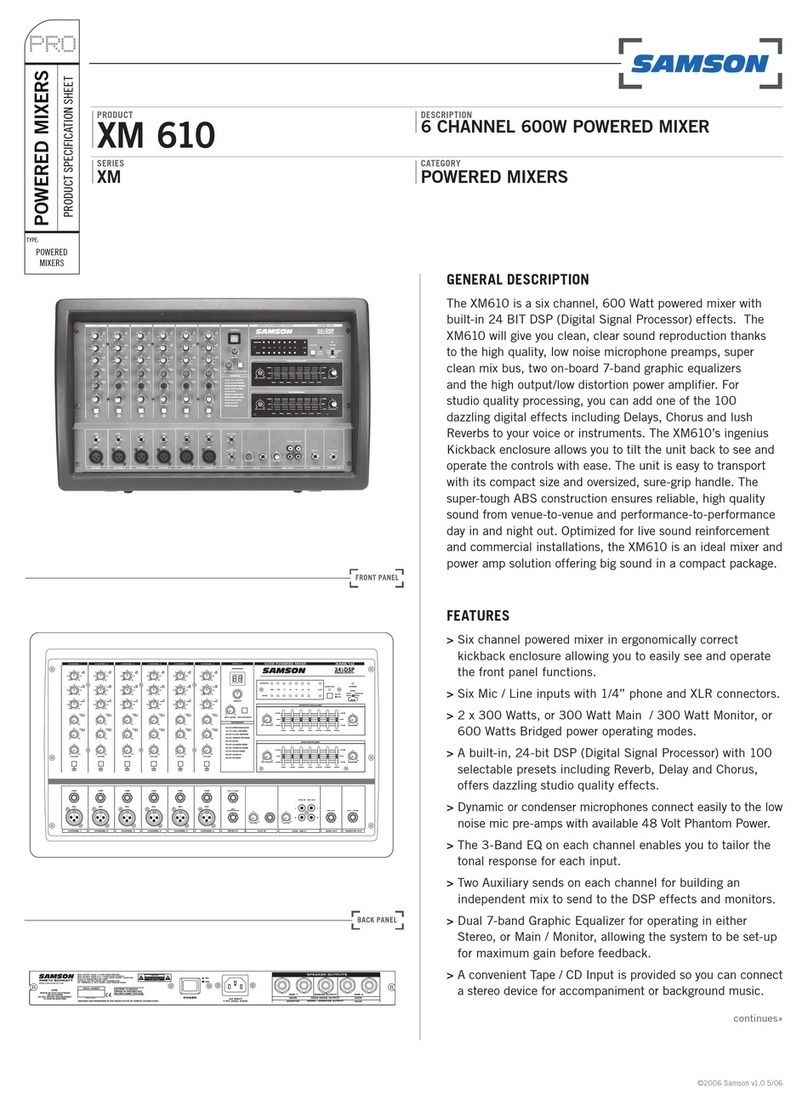
Samson
Samson Xm 610 User manual
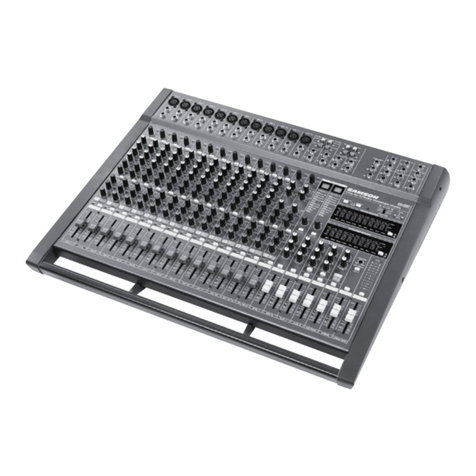
Samson
Samson TXM20 Installation instructions
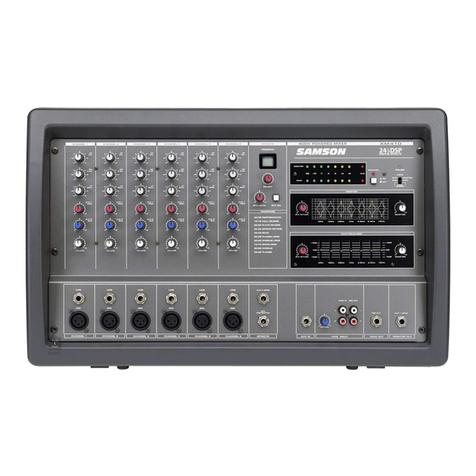
Samson
Samson XM 410 User manual
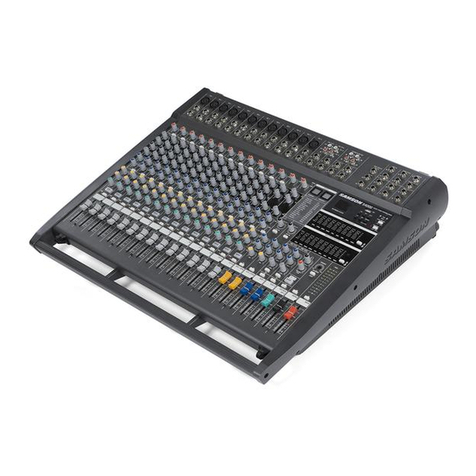
Samson
Samson S4000 User manual
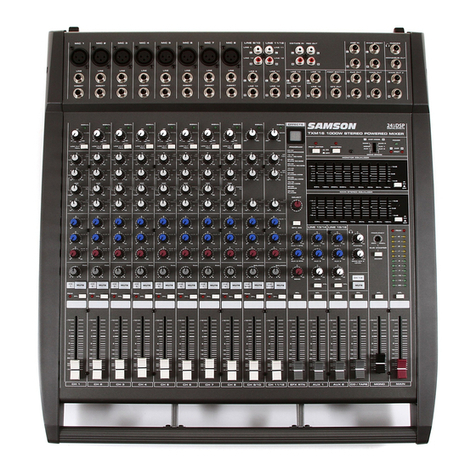
Samson
Samson Txm16 User manual
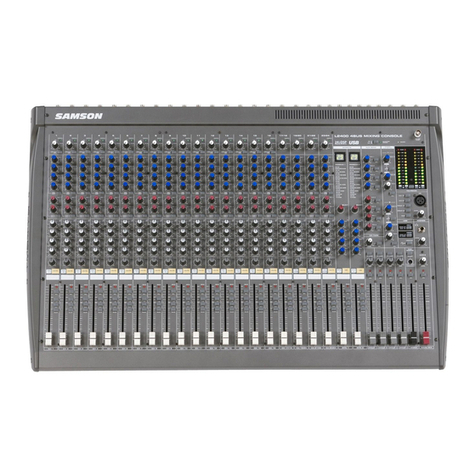
Samson
Samson L2400 User manual

Samson
Samson PA324 User manual

Samson
Samson MDR 1064 User manual
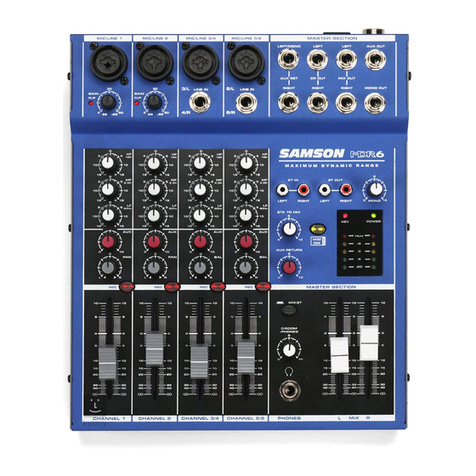
Samson
Samson MDR MDR 6 User manual
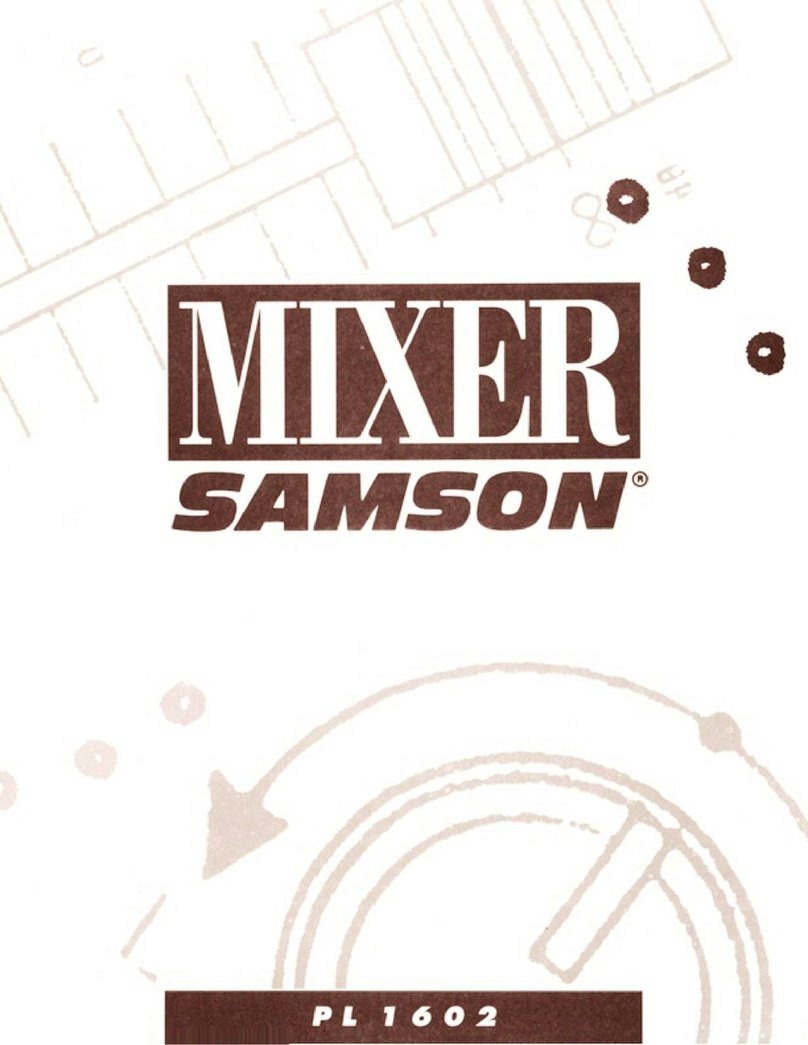
Samson
Samson PL1602 User manual
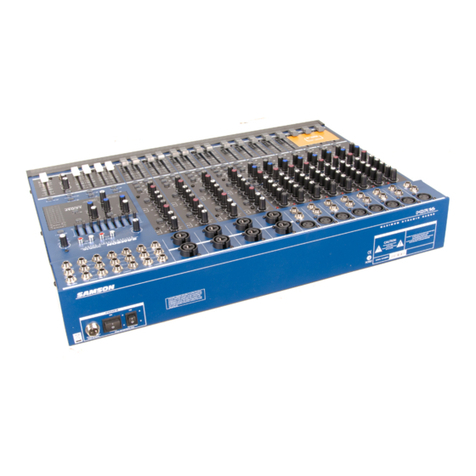
Samson
Samson MDR 16 User manual

Samson
Samson Mixpad 12 User manual

Samson
Samson TM 500 User manual
